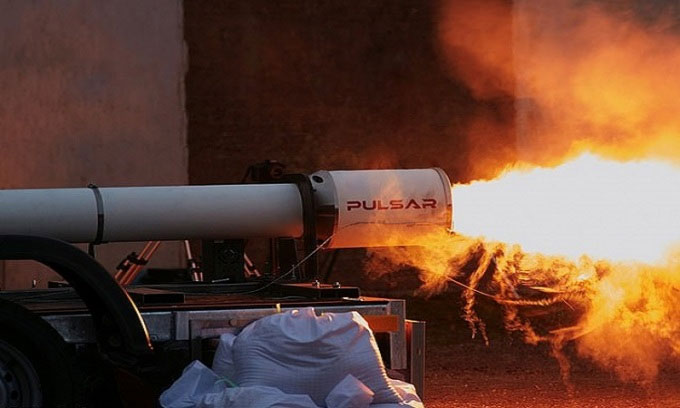Pulsar Fusion is developing and testing a rocket engine powered by compounds found in recycled plastic waste.
Pulsar Fusion, a thermonuclear energy company based in Bletchley, conducted successful tests at COTEC, a military base of the UK Ministry of Defence in Salisbury, on November 17 and 18. According to Pulsar Fusion, the rocket engine powered by plastic waste has a wide range of applications, including transporting people and satellites into space.

Pulsar’s plastic waste-powered engine successfully ignited. (Photo: Pulsar)
Pulsar Fusion’s greatest ambition is to produce a hypersonic propulsion system using thermonuclear energy technology for interplanetary travel, aiming to cut the flight time to Mars by half. The company is currently developing a prototype of a thermonuclear reactor designed to generate plasma hotter than the surface of the Sun.
The static fire test conducted last week showcased impressive visual effects in the form of diamond shockwaves, a type of wave commonly seen in the exhaust of space propulsion systems. Following this, the company demonstrated the engine to aerospace industry clients in Switzerland on November 25.
Pulsar’s rocket engine is a hybrid engine, utilizing propellant in two different phases (liquid and gas/liquid). This “green” rocket operates using high-density polyethylene (HDPE) derived from recycled plastic and nitrogen oxide. When burned together, these two fuels produce a non-toxic smoke plume.
According to Richard Dinan, CEO of Pulsar Fusion, the hybrid engine can run on recycled plastic waste, while liquid fuel engines cannot. Plastic bottles and various other waste materials can be melted down and molded into cylindrical shapes to be placed into the rocket before each launch.
In September 2021, Pulsar Fusion received funding from the UK government to develop plasma engines. Pulsar’s propulsion systems can withstand 20 g of vibration simulating rocket launches in recent tests conducted in Hawaii.
By 2025, Pulsar Fusion aims to develop a thermonuclear propulsion engine for static fire testing. In 2027, the company plans to manufacture and launch a thermonuclear rocket engine into orbit.


















































